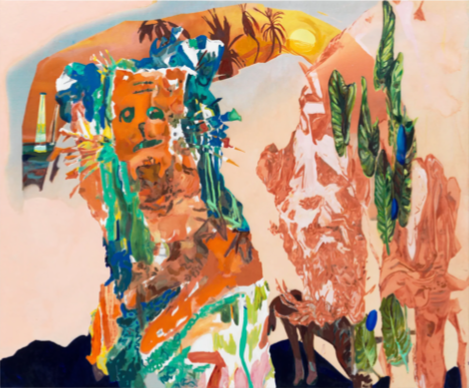
Rachel Rossin’s “Mirror Milk.” Courtesy of the artist and Zieher Smith & Horton, New York
In Rachel Rossin’s ‘Lossy,’ the Virtual Reality of Living in a Painting
By Martha Schwendener
Nov. 5, 2015
Virtual reality is once again being acclaimed as the next big thing, driven this time by smartphone technology and Facebook’s acquisition of Oculus Rift last year. But virtual reality has been on the rise among artists for a couple of years: Jon Rafman, Daniel Steegmann Mangrané and Joe Fig have all harnessed it. In January Rachel Rossin hosted a one-night event at Signal in Bushwick that featured one of her virtual reality projects, and now she is showing another such piece along with her near abstract paintings.
To create this work, Ms. Rossin scanned bits of her paintings and images photographed in her studio and apartment and created a two-and-a-half minute video that you experience by donning a Rift headset. Unlike the seamless environment you generally see in video games, Ms. Rossin’s includes lots of white space; objects and fragmented forms float within it, occasionally disintegrating — hence the “lossy” in the exhibition’s title, a word that suggests entropy in the coding of digital images or sound) on what feels like near impact with your eye. Where virtual reality has been criticized for leaving you disoriented or queasy, isolating the eye in this manner simulates the fantasy of living inside a painting or having painterly images converge with your retina. The effect is destabilizing and exhilarating.
Neither Ms. Rossin’s paintings nor the virtual reality piece, however, feel like fully realized masterpieces. “Digital painting” has always seemed like an oxymoron: The tactility of painting, and its static depiction or recording of movement, are part of the medium’s appeal. But Ms. Rossin has achieved something, forging a connection between abstract painting and augmented perception that opens up a fourth dimension that existed only in theory for earlier painters.